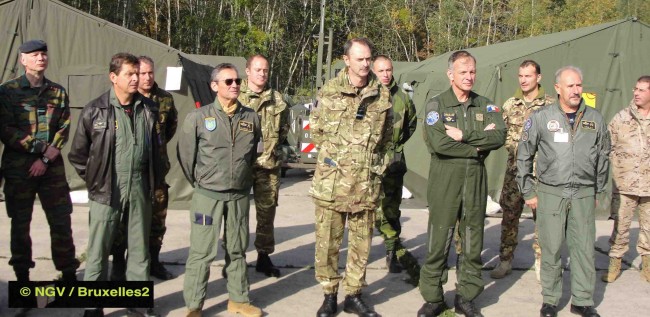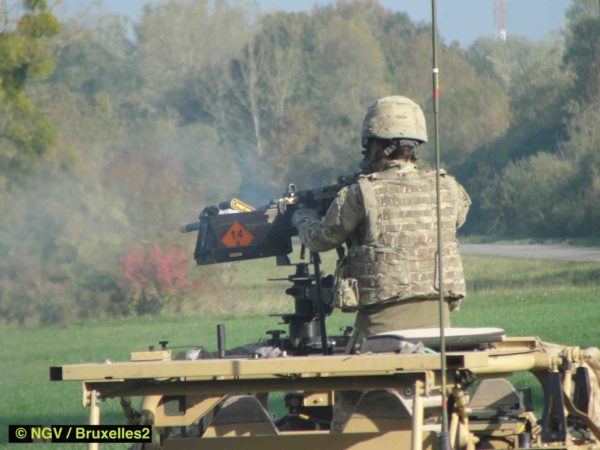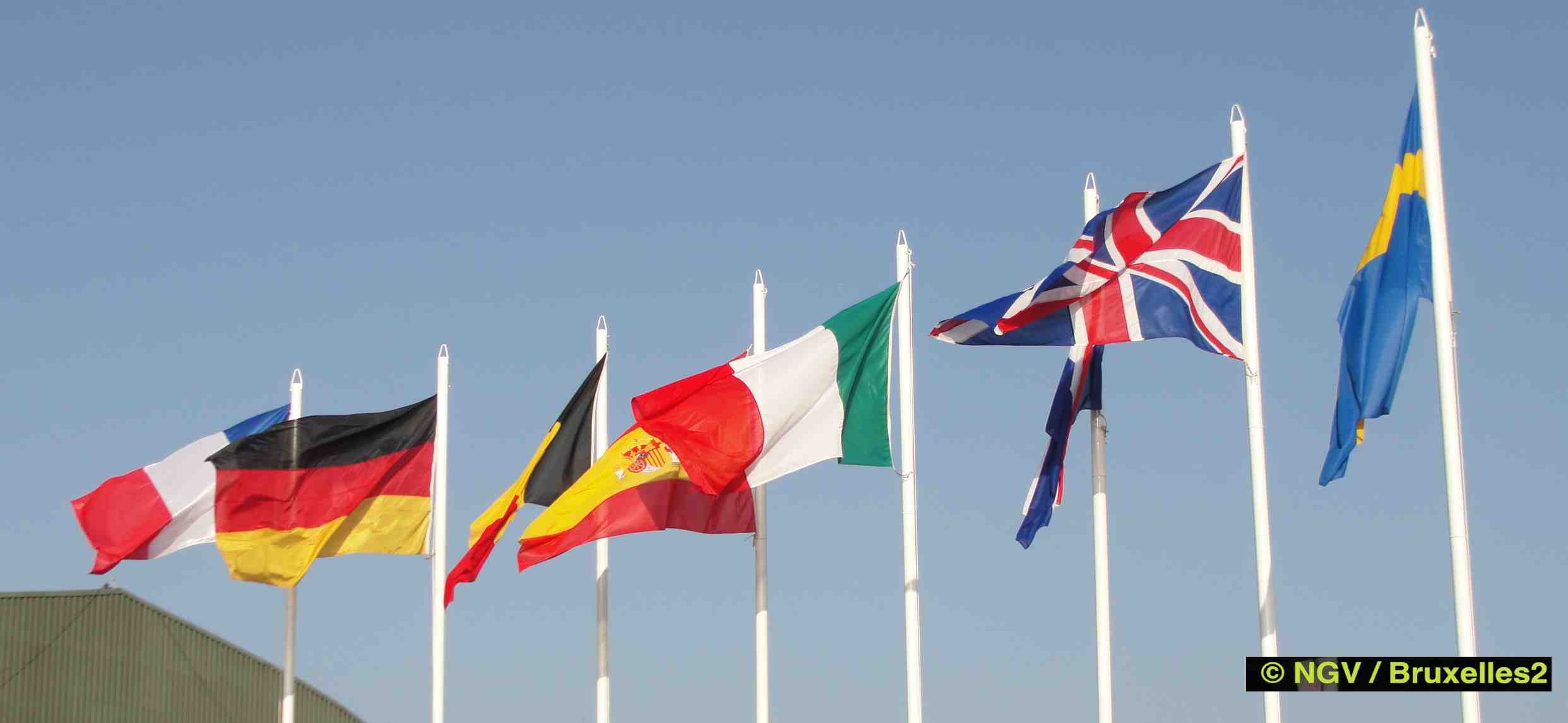Airex, Bapex and Volcanex…
(BRUSSELS2 to Séchault) Unlike ML12 which was more of a politico-military exercise of the General Staff, the exercise or rather the three exercises which have just taken place simultaneously in the Ardennes, near the Vouziers base , had another nature, to test, train the forces in the command and conduct of air operations (AIREX), from a projectable air base or DOB (BAPEX), and to train the protection forces during an international crisis leading to national evacuation operations (VOLCANEX).
An integrated exercise
The originality of this exercise was to obtain a more thorough integration of the seven participating nations in the European Air Group (France, Spain, Italy, Germany, Netherlands, United Kingdom, Sweden). Usually a nation supports a function on the exercise (for example air support...). Here the nationalities have mingled in the different functions “to get the best out of everyone explains General Caspar Fille Lambie, commander of air defense and air operations. This integration involved all levels of function. Thus the protection forces to protect the nationals during the evacuation exercise were British, Spanish and Italian while the extraction forces joined a French Caracal, Belgian air commandos and British ground forces; the management of the base was totally mixed; to the mess where French and Germans served together in the two messes, one French, the other German. " Never in the maneuver, multinationality has delayed the maneuver. (...) Far from slowing down this diversity has pulled us up insists Caspar Girl Lambie.
Multinational operations a necessity.
The exercise also consisted of a handover of command during the operation between the British who had taken command at the start and the French who took over. " The (British) system was robust. The transition was smooth. The failure that can be supported by the human is mitigated by the procedures. The British are used to working in the expeditionary force” thus considers a French lieutenant colonel involved in the exercise. A point of view corroborated by his Belgian colleague, Major Ronald Hoppe: " The British have a very picky way of working. It's interesting to watch how they operate in command. There are synergies to be sought. Because today, it is no longer possible for a nation to work alone, deployment is only possible in a multinational ».

The search for realism
In addition to the assembly of the air base and its implementation, a series of incidents and unforeseen events were planned during the exercise which took place in hostile terrain: rebel attacks, convoy ambushes, IEDs, stockpiles CBRN to be treated, etc. This required implementing all the necessary elements: from intelligence to the protection force, including transport or the extraction of civilians. The difference with a simple General Staff exercise lies in two words: the human factor and the mechanical factor. " A transmission that does not pass, the mechanics that break down, time, fatigue... All this gives realism and flesh to an exercise says the lieutenant-colonel in charge of the protection force. Even the role of information and counter-information was played by the establishment of a local newspaper which reported the events, sometimes in a roundabout way, for example by emphasizing the civilian victims attributing them to the military...

Work on interoperability
The interest of the exercise is to observe the methods of each other, to perfect one's knowledge to better operate in coalition. " In the air, pilots have had common standards for a long time, used to working together, standardization of operating methods. On the ground, in setting up the base, we do not yet have the same level of standardization says General Caspar Fille Lambie. There have been discoveries. A kennel had been set up for the guard dogs. But the French were surprised to discover the Swedish method. " A dog handler sleeps with his dog. It is the rule. It was therefore necessary in the evening, at 23 p.m., to set up a tent near the kennel. says one of the base craftsmen. Basically, however, we have no fundamental difference in the way of operating. We have already been working in NATO structures for years” observes Ronald Hoppe. But, he completes « There are synergies to be sought. Because today, it is no longer possible for a nation to work alone, deployment is only possible in a multinational ».
The lesson of the Libya operation: the short loop
One of the challenges of the exercise was also to " draw the first lessons from the operation in Libya ” as detailed by General Caspar Fille Lambie, in particular the “fast loop” implemented during Operation Harmattan. From planning to strike, there were then sometimes only a few hours, the longest often being to ensure that the intended target is far from an urban center or civilians, in order to avoid collateral damage. An imperative of the modern rules of engagement of the last conflicts led by the West. This may be necessary, for example, if a terrorist group infiltrates or a threat emerges; " You have to detect it, follow it, have the right means to strike, ”says the general. Multinationality requires, for example, precise knowledge of the armaments of other nations. In the operational phase, it is a "short loop" of not wasting time at any point in the chain. »
(*) 1400 participants including 42% foreigners, 64 aircraft (hunting, supplies, helicopters and tactical transport)
